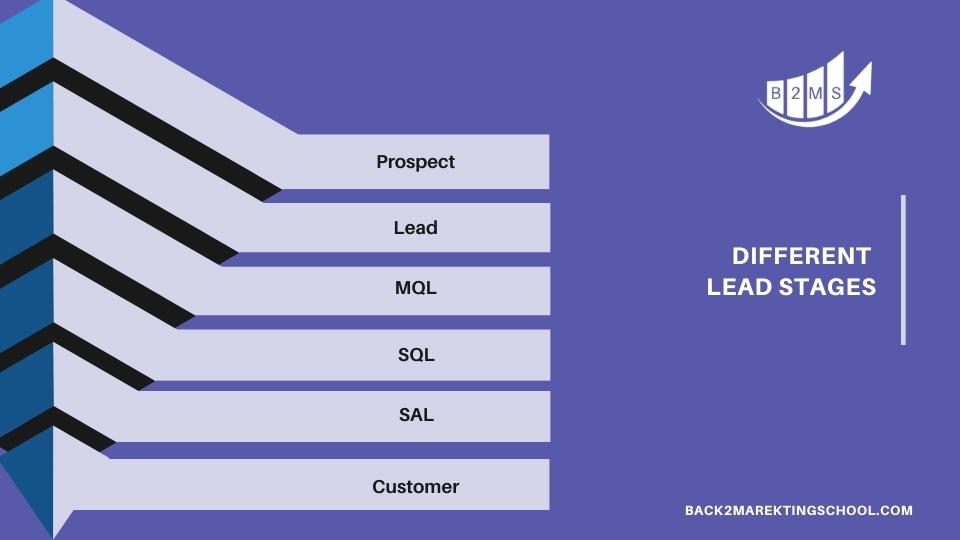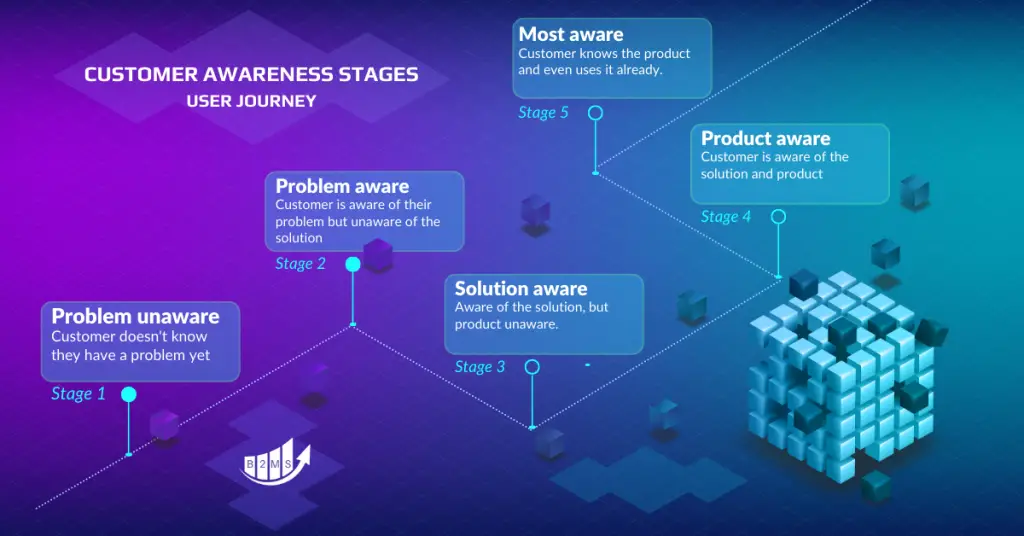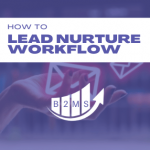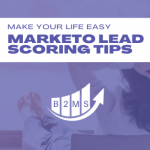Mastering B2B Lead Nurturing: Strategies, Campaigns and Examples
What Is Leading Nurturing?
Lead nurturing means developing or acquiring leads that are likely to become buyers, but aren’t there yet.
For lead nurturing to be successful, the process should correctly predict the buyer’s needs based on customer segmentation.

The buyer persona is based on various factors like title, role, industry, etc.
Once you know your ideal customer, you’ll have to understand their pain points and where they are in the buying process or marketing funnel.
What Is B2B Lead Nurturing?
B2B lead nurturing means engaging with potential customers during the sales cycle using personalized, targeted content.
It’s an essential element of a marketing strategy and lead capture. B2B lead nurturing has to be taken into account when launching campaigns.
Otherwise, you won’t be there when your customer is looking to learn, explore, and finally make a purchase or subscription.
Lead Capture vs. Lead Nurture
Lead capture and lead nurture can be mistaken for the same thing. However, knowing the benefits of each one enhances your lead generation process.
Capturing leads focuses on expanding your customer base and securing customers through plenty of marketing channels.
Moreover, capturing leads creates an exciting idea about your products or services, which attracts potential customers.
Importance of Lead Nurturing
Lead nurturing helps to drive sales. This is through businesses nurturing leads who are further down the sales funnel. They can do so by providing more personalized and valuable content.
Consequently, your brand builds credibility with the customer, ultimately leading to increased sales.
Why Is Lead Nurturing Important In B2B?
The same can happen when a business is trying to sell its products and services to other businesses.
Instead of segmenting individuals, the different companies are analyzed to familiarize yourself with their interests and needs.
Lead Funnel
There are plenty of ways to assess customers in the B2B sales cycle.
One of them is from the business scope—which is to divide customers according to which department handles them. This separates them into leads, MQLs, and SQLs or SALs.
Another way is to divide leads from the customer’s scope. This means assessing them according to which behavioral stage they’re in or where they are in the marketing or sales funnels.
Let’s look further into what each scope means.
Business Scope
If you’re the business and you’re looking at the funnel to determine whom from the company should reach out to the customers, here’s how to tell:

Lead
Becoming a customer starts with being a lead. They’re aware of the business and might purchase it in the near future.
MQL
Marketing qualified leads (MQL) are someone who has engaged with the business. MQLs have the potential to become customers but need pretty good nurturing.
SQL or SAL
Sales qualified leads (SQL) or sales accepted leads (SAL) are what an MQL becomes once they’re ready to talk to your sales team.
An SQL is a customer that has already passed the researching and vetting process by your sales and marketing teams.
Good B2B marketing and marketing automation increase your chances of turning MQLs into SQLs at a significant level.
Customer Scope
If you’re approaching the process with a customer-centric mindset, here’s the breakdown of customer behaviors.
The funnel consists of six intricate stages: Awareness, interest, consideration, action, loyalty, and advocacy.
Opportunity
To bundle the stages up, there’s the top of the funnel or the opportunity stage. This includes people who are aware of, have an interest in, or are considering your brand or business.
Customer
Customers are in the action and loyalty stage. They’re the ones that buy and keep repurchasing your product or service.
Advocate
The final stage of behavior is advocacy, where customers like your brand so much that they recommend it to their family and friends.
Despite the existence of endless marketing channels out there, word of mouth remains one of the most winning strategies.
Lead Qualification
Lead qualification is the process through which you can assess and predict whether the sales prospect will become a customer.
It’s not binary, however, as there’s always a percentage of likelihood that a lead will become a prospect and ultimately, a customer.
Ideal Customer Profile
An ideal customer profile (ICP) is a detailed description of a customer—or in the case of B2B, a company—that you want to target for your business.
Determining the ICP of your target companies is the most effective way to increase revenue. These companies are the most likely to take an interest in, buy, and stay loyal to your products or services.
Pro tip: uncover your buying personas’ reading habits for a tailored content marketing and advertising strategy.
Lead Scoring
Lead scoring is the process of quantifying some metrics that help you assess the value of a lead.
After all, you can’t spend the same time and energy on every lead or prospect. Perhaps, for a startup, each lead is as important as the next.
However, once you’ve become somewhat established, you’re going to have to think about the prospects that are the most likely to buy your product or service; and that’s where lead scoring is crucial.
Effective B2B Lead Nurturing Strategies
To elevate your lead nurturing efforts, it’s essential to deploy a mix of effective B2B lead nurturing strategies tailored to your target audience.
- Increases purchases of a particular product or service.
- Increase contract or license renewals.
- Drive up registrations for an event, whether it’s a webinar or in-person.
- Expand subscription sign-ups.
What Are B2B Lead Nurturing Campaigns?
As with any marketing element, B2B lead nurturing requires that you run campaigns to achieve your goals. Typically, you want to do one of the following:
- Content Marketing: Develop blog posts and articles that provide relevant content at each stage of the buying journey. This helps in building trust and positioning your brand as a thought leader in your industry.
- Personalized Email Campaigns: Use email campaigns to deliver personalized messages and offers to leads who are ready to make a purchase. Segment your email list based on lead behavior and engagement to ensure the content is highly relevant.
- Social Media Engagement: Leverage social media platforms to engage with your target audience. Share insights, blog posts, and case studies that resonate with their interests and challenges. Social media is also an excellent tool for building trust and nurturing relationships over time.
- Targeted Content Offers: Create and offer content that addresses the specific pain points and questions of your leads. This could include eBooks, whitepapers, one-pagers, and case studies that provide valuable insights and demonstrate your expertise.
- Lead Scoring: Implement a lead scoring system to prioritize leads based on their engagement and likelihood to convert. This allows you to focus your lead nurturing efforts on those who are most ready to make a purchase.
Best Practices for B2B Lead Nurturing: How to Get Started and Improve Your Campaigns?
Some good practices help you achieve your B2B lead nurturing campaign goals more efficiently. Let’s look at some of the most important ones.
Automation
While the first thing that may come to your mind is lead nurturing emails, there’s a lot more to it than that.
B2B lead nurturing campaigns will require you to optimize landing pages, segment leads as well as organize their categories, and track contact behavior.
Not only that, but the lead nurturing workflow will be the most efficient if you find automation that also personalizes content and provides you with analytics.
Measuring Success in B2B Lead Nurturing Efforts
To truly optimize your lead nurturing campaign, it’s crucial to leverage analytics and reports for insightful B2B marketing attribution. By meticulously analyzing your data, you can pinpoint exactly where prospects drop off in the buying journey, allowing you to refine your strategies and prompts more effectively.
This process not only helps in identifying the weaknesses in your funnel but also highlights the strengths, enabling you to allocate resources more efficiently and enhance the overall effectiveness of your lead nurturing efforts.
Key metrics to monitor include engagement rates of blog posts and email campaigns, conversion rates at each stage of the buying journey, and the overall impact of relevant content on building trust with your target audience.
By understanding these analytics, you can ensure that your content is always aligned with the needs of your prospects, guiding them smoothly toward being ready to make a purchase.
Challenges and Solutions in Business-to-Business Lead Nurturing
While lead nurturing is essential for B2B success, it comes with its set of challenges. Here are some common obstacles and solutions to help you navigate them:
- Challenge: Engaging Leads at Different Stages: Not all leads are at the same stage of the buying journey, making it difficult to engage them effectively.
- Solution: Use segmentation and lead scoring to tailor your lead nurturing efforts. Provide relevant content and communication based on the lead’s specific stage in the buying journey.
- Challenge: Creating Consistently Relevant Content: Keeping up with the demand for fresh, relevant content can be daunting.
- Solution: Develop a content calendar that aligns with your overall lead nurturing strategy. Repurpose existing content across different formats (e.g., turn a blog post into a video or an infographic) to maximize resources.
- Challenge: Measuring the Effectiveness of Lead Nurturing Campaigns: Determining the ROI of lead nurturing efforts can be complex.
- Solution: Establish clear KPIs and use analytics tools to track engagement, conversion rates, and other relevant metrics. Regularly review and adjust your strategy based on these insights.

Case Studies and Examples
I worked with many clients who want to improve their overall Lifecycle Marketing. Here are two snapshots of how nurture campaigns improved the overall marketing results:
- Cybersecurity Company: A B2B cybersecurity company implemented a multi-channel lead nurturing campaign that included targeted email campaigns, personalized blog posts, and active social media engagement. By providing relevant content that addressed the specific needs of their target audience at each stage of the buying journey, they saw a 30% increase in conversion rates.
- B2B SaaS Startup: Facing challenges in building trust with potential clients, this startup launched a blog that featured posts on industry trends, solutions to common problems, and case studies of their products in action. They complemented this by implementing an email automation solution that was able to deliver targeted emails, resulting in a significant increase in engagement and a 20% growth in sales-ready leads. (heads-up, we used ConvertKit for this client to offer different lead magnets at different content stages of the buyer journey).
Software
There are plenty of software options that can help you automate your marketing processes, including lead nurturing campaigns.
Some lead nurture software options are:
ConvertKit
ConverKit helps you reach new levels of success by growing your audience through forms and landing pages. It also helps you connect with leads through email designers, email marketing, and deliverability.
Finally, it automates your marketing through visual automation and integrations.
ClickFunnels
ClickFunnels leaves no stone unturned. It has A/B testing, analytics, CRM, eCommerce stores, online courses, email marketing solutions, and more.
If you want a comprehensive space where you can learn and use the help of tools to drive growth, it’s an excellent option.
Check out our head-to-head comparison of ConvertKit vs ClickFunnels
BuilderAll
BuilderAll works on enhancing automated emails to collect and manage leads. It focuses on building a healthier sales funnel. It does so by automating your marketing, engagement, and sales processes.
Final Thoughts
Once you understand the mechanisms of a B2B lead nurturing campaign, you’ll easily be able to deploy them for the growth of your business.
If you’re serious about growing your business, then lead nurturing should be a top priority. With the right strategy and the right tools, you can start turning leads into paying customers.

Sascha is a Lifecycle Marketing Consultant with over 8 years of digital marketing experiences in Silicon Valley, the UK, and Germany.
After leading the demand generation for a 100+ million company, he decided to venture out on himself. He’s now helping clients to attract and convert more leads and customers.
His main focus are SEO, paid media & marketing automation – all with the focus to tie marketing campaigns to revenue.
Sascha has been featured in industry publications.




